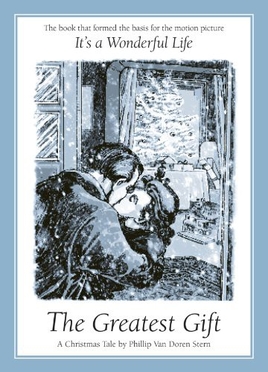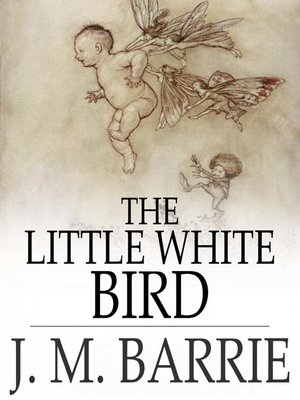This is our fifth installment of this game. The rules are simple.
Below you will find ten characters familiar from popular culture. Your job is to decide where they originated. For example: Zorro began life in a short story by Johnston McCulley (1919).
The white box shows the possible answers. Solutions are at the bottom of the page.
George Bailey.
Don Juan.
MacBeth.
Tweedledee.
Tony Manero.
Morgul the Friendly Drelb.
Inspector Clouseau.
Sach Jones.
John McClane.
Boilerplate.
Got your votes in? Okay, here we go...
George Bailey. Short story. George Bailey is, of course, the hero of the movie It's A Wonderful life. Few people know that he originated in a story by Philip Van Doren Stern called "The Greatest Gift" (1943). Stern couldn't find a publisher for his tale so he had 200 copies printed and sent out as holiday gifts, and a Hollywood producer got his hands on one. The movie (1946) was nominated for five Oscars and is consistently listed as one of the best American movies.
Don Juan. Play. The man whose name is synonymous with seduction was invented by a priest. Tirso de Molina lived most of his life in Spain and claimed to have written over 300 plays but he is famous for The Trickster of Seville and the Stone Guest, which introduced the rogue. DJ has since appeared in a play by Moilere, an opera by Mozart, a poem by Lord Byron, and a movie starring Errol Flynn.
Macbeth. Real life. Macbethad mac Findláech was king of Scotland from 1040 to 1057. He replaced King Duncan, not by treacherously killing him in his sleep, but by winning a battle in which Duncan died. Shakespeare made him a villain, at least partly because his enemy Banquo was thought to be an ancestor of the current King James. Oh, have you ever wondered what Lady Macbeth's name was? In real life she was Gruoch ingen Boite. No wonder Bill the Bard just called her Lady.
Tweedledee. Poem or Nursery Rhyme? Mr. Dee and his companion Dum received their familiar shape and other characteristics in Lewis Carroll's Through the Looking Glass (and Tenniel's illustrations) but their origin story is older and murkier than that.
John Byrom wrote a poem in 1725:
- Some say, compar'd to Bononcini
- That Mynheer Handel's but a Ninny
- Others aver, that he to Handel
- Is scarcely fit to hold a Candle
- Strange all this Difference should be
- 'Twixt Tweedle-dum and Tweedle-dee!
And that is apparently the oldest written reference to the two T's so some have claimed Byrom originated them. To which I reply: Pfui. It makes no sense for the poet to have invented these names and thrown them into his poem at random. Surely he was assuming that his audience was already familiar with this nursery rhyme, although it didn't appear in print until 1805:
- Tweedledum and Tweedledee
- Agreed to have a battle;
- For Tweedledum said Tweedledee
- Had spoiled his nice new rattle.
- Just then flew down a monstrous crow,
- As black as a tar-barrel;
- Which frightened both the heroes so,
- They quite forgot their quarrel
- Of course, this is the poem Carroll based his characters on.
Tony Manero. Article or Short Story? Ah,yes. Cool white suits. Disco dance moves. John Travolta. Some of you may remember that Saturday Night Fever was inspired by an article in New York Magazine by Nik Cohn titled "Tribal Rites of the New Saturday Night." Twenty years later Cohn admitted that he made the whole thing up. He did attempt to go to a disco but a drunk threw up on his leg so he gave up on research. So Tony Manero was a figment of the Brit's imagination.
Morgul the Friendly Drelb. Television. Anyone too young to collect Social Security probably thinks I made this up. I didn't. Rowan and Martin's Laugh-In premiered on January 22, 1968 and was one of the defining TV shows of the sixties. That first episode included a sketch about a pink Bigfoot-like creature named, well, you already guessed. The bit wasn't funny and he never reappeared. But at the beginning of every episode the golden-throated announcer Gary Owen read off the list of cast members and it ended with "and Morgul the Friendly Drelb!"
Inspector Clouseau. Movies. No surprise here. The incompetent French cop was played by Peter Sellers in The Pink Panther and four sequels. But the story is a bit more complicated. The second flick, A Shot in the Dark, was based on a play which did not include Clouseau. In later movies he was portrayed by Alan Arkin, Roger Moore (in a cameo), and Steve Martin.
Sach Jones. Movies. Horace DeBussy "Sach" Jones was a character in the almost fifty Bowery Boys movies, played by Huntz Hall. Growing up I watched one on TV almost every Saturday morning. As the short movies got sillier goofy Sach became a major player. I looked this up after seeing the movie Dead End (1937), starring Humphrey Bogart. In that movie and the original play, Hall played a juvenile delinquent and the "Dead End Kids," led by Hall and Leo Gorcey spun off into several movie series before ending up as the way-past-their-sale-date delinquents in the Bowery Boys. One little oddity: In 1943 Hall starred as "Dilbert," a dangerously incompetent naval pilot in the training film "Don't Kill Your Friends."
John McClane. Novel. We all know McClane from the Die Hard movies, but he is based on Detective Joe Leland in Roderick Thorp's novel Nothing Lasts Forever, about terrorists taking over a skyscraper. Oddly enough this is not Leland's first sojourn to popcorn-land. Frank Sinatra's The Detective was based on Thorp's first novel about him. So arguably Sinatra and Bruce Willis played the same guy.
 |
| https://tinyurl.com/3td9e635 |
Boilerplate. Website. Boilerplate was a robot first revealed in 1893, who participated in an Antarctic expedition, the Spanish-American War, and the Boxer Rebellion. Of course, none of that is true. It was created by Paul Guinan in 2000 for a website, using remarkably realistic looking historical photos of Boilerplate with Teddy Roosevelt, etc.
But here's where it gets weird. In 2005 actor Chris Elliott wrote a comic historical novel called The Shroud of the Thwacker, using Boilerplate as a character. He gave Guinan no credit. Was this plagiarism? Not intentionally. But surely Elliott didn't think the robot was real?
No, he said. He thought it was a Victorian hoax. Happily Gaulin and Elliott reached an agreement out of court.
Well, that's enough. Until next time, may all your Drelbs be friendly.













